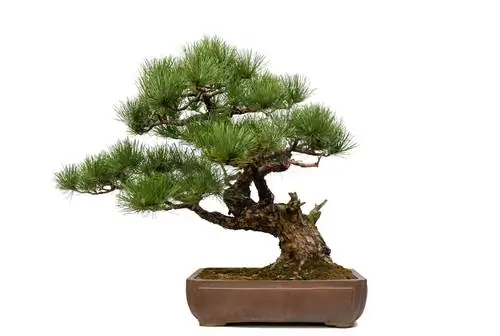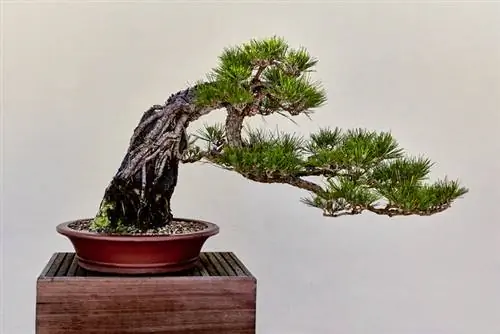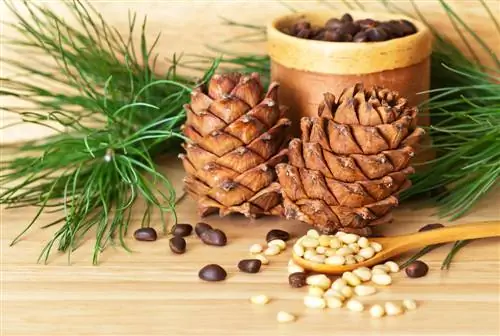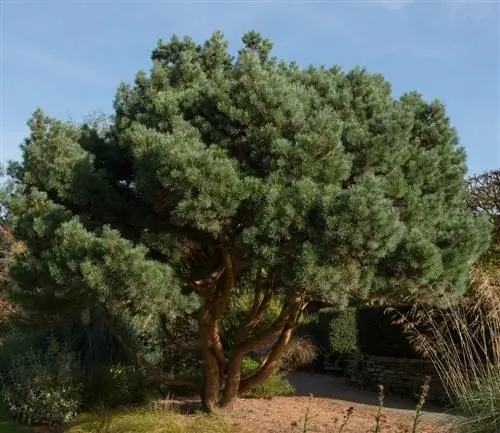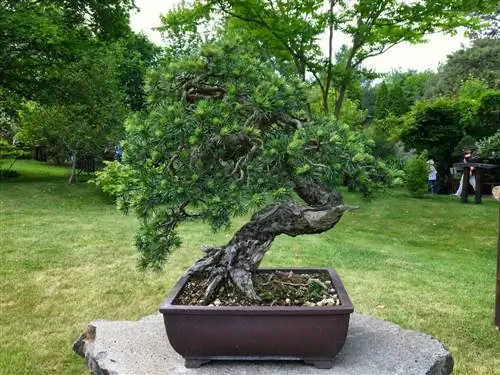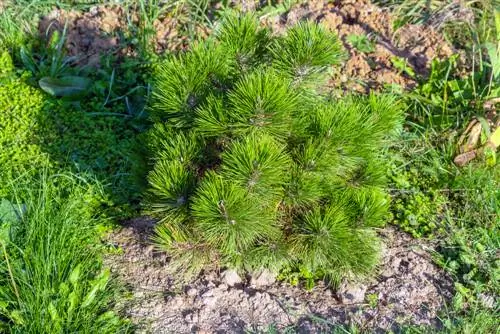- Author admin [email protected].
- Public 2023-12-16 16:46.
- Last modified 2025-01-23 11:21.
Many people consider the pine tree to be the ideal tree for a garden bonsai. In the wild alone, where pines sometimes reach heights of up to 40 meters, the conifers have bizarre crown shapes that are caused by weather conditions such as wind. With targeted lighting you can focus on this remarkable appearance. The conifer also impresses with its bark, which turns bright red as it ages. Below you will learn more about the great properties that make the pine tree the perfect bonsai. But the best thing has already been revealed in advance: a pine tree is extremely easy to care for as a bonsai.

How do I properly care for a pine bonsai?
A pine bonsai needs a lot of light, regular watering without waterlogging, fertilization after budding, appropriate pruning depending on the type of pine and repotting every two to three years including root pruning.
The type of pine is crucial
In order to apply the correct care measures, it is important that you analyze whether your pine tree is a single or double shoot conifer. The species plays a crucial role, especially when cutting the jaws. While pines with two shoots per season can easily be shortened with candle pruning, conifers with only one shoot are damaged by this procedure. How to determine the type of jaw you have:
The pine tree with one shoot
Pine trees of this type are often exposed to storms that regularly knock down their candles. The trees have adapted to these conditions with a second shoot per season. The following varieties fall into this category:
- Japanese black pine
- Japanese red pine
The pine tree with two shoots
Pines with only one shoot come from the mountains, where the climate is also harsh. However, their location does not require any adaptation. These include:
- Girlspine
- European black pine
- Scots pine
- and mountain pine
Care instructions
Location
Pine trees are used to harsh climates, but they definitely need a lot of light. Place your garden bonsai directly in the sun away from walls and buildings.
Pouring
Drought is not a problem for pine trees, but it is beneficial to keep the substrate moist at all times. However, you should avoid waterlogging.
Fertilize
The best time to enrich the substrate of your garden bonsai with fertilizer is the time after sprouting. From April to August, fertilize every two weeks with a special bonsai liquid fertilizer (€4.00 on Amazon) from specialist retailers. You only have to stop applying fertilizer during budding.
Cutting
Important aspects to consider when cutting your bonsai pine tree:
- A radical cut is best done in winter to keep the resin release as low as possible
- In July and August you can cut the needles back to 1 cm or completely
- in autumn, remove the buds with tweezers
- repeat the procedure the following spring (March-April)
- in May, adjust the size of the candles and young shoots of your pine tree. As a rule, these are cut back to two thirds
- Pluck or cut off old needles from the previous year in October
Repotting
To ensure that your pine tree develops well, it makes sense to repot the conifer every two to three years. The best time for this is from February to May or September to October. In this context, a simultaneous root cut is recommended.

